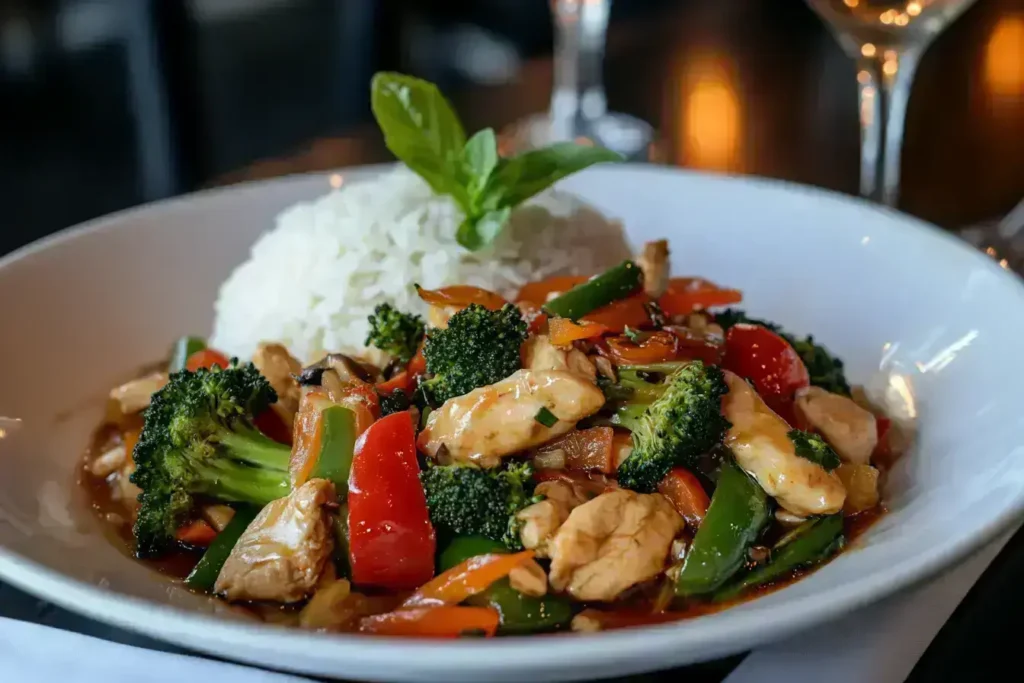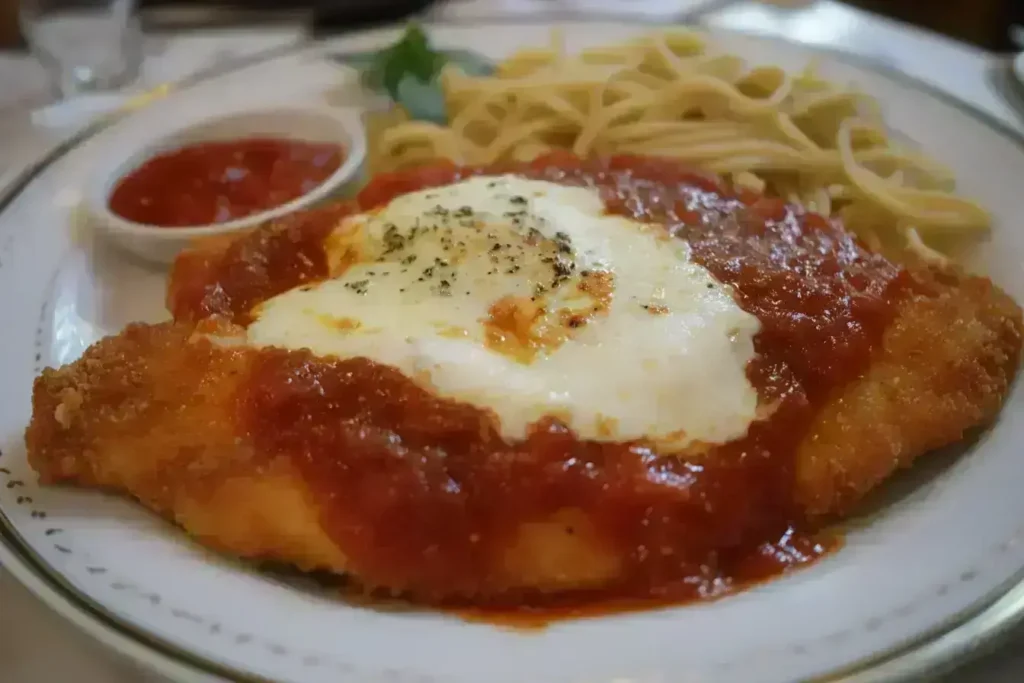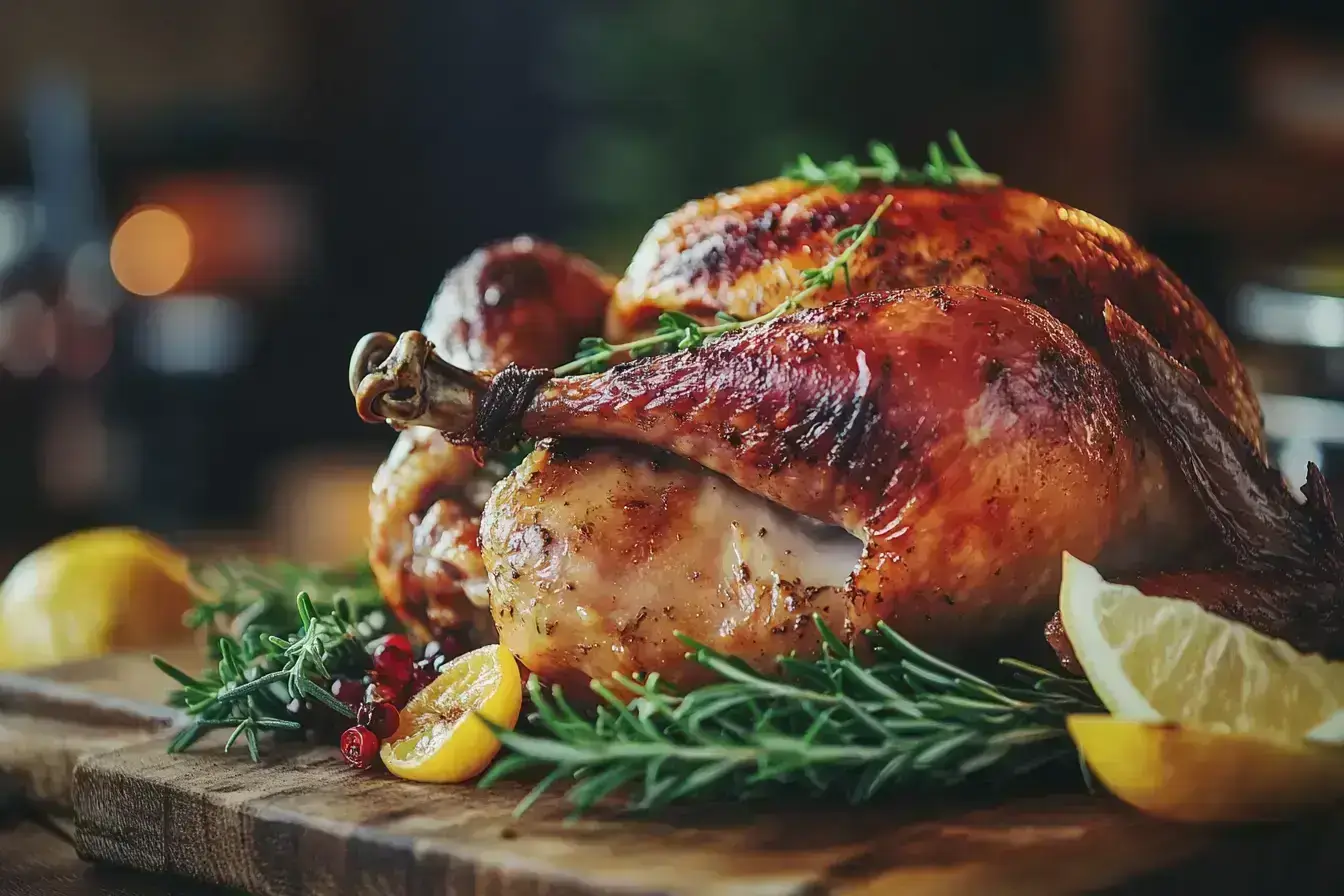Table of contents
- Why Everyone Cooks Chicken in Their Kitchens
- The Health Benefits of Cooking Chicken
- Essential Tools Every Cook Needs to Cook Chicken
- Popular Methods Everyone Uses to Cook Chicken
- Common Mistakes Cooks Make When Cooking Chicken
- Recipes Every Cook Can Use to Cook Chicken
- How Cooks Can Make Chicken Healthy and Safe
- Easy Ways Every Cook Cooks Chicken for a Balanced Diet
- Creative Ways Every Cook Elevates Chicken Dishes
- How Every Cook Boosts Flavor When Cooking Chicken
Cooking chicken is more than just a routine kitchen task—it’s an opportunity to create meals that are flavorful, healthy, and satisfying. How one cooks chicken can determine whether the dish turns out juicy and tender or dry and bland. In this ultimate guide, we’ll explore the secrets behind how everyone cooks chicken, from grilling to frying, while avoiding common mistakes. Whether you’re a beginner or a seasoned home chef, mastering how to cook chicken will elevate your skills and make every meal unforgettable.
Why Everyone Cooks Chicken in Their Kitchens
Chicken is one of the most versatile ingredients, and the way one cooks chicken can vary widely depending on culture and cuisine. Whether it’s grilled, roasted, or fried, knowing how to properly cook chicken makes it a staple in households worldwide. takes on flavors beautifully, making it a star ingredient in cuisines worldwide.
The Health Benefits of Cooking Chicken
When someone cooks chicken the right way, it retains its nutrients and delivers an excellent source of protein. Cooking methods such as grilling or steaming ensure that chicken remains healthy while still tasting delicious. Here’s why it should be part of your meal:
- Protein Power
Chicken is packed with high-quality protein, essential for building muscles, repairing tissues, and supporting a healthy immune system. - Rich in Vitamins and Minerals
Did you know chicken is a great source of B vitamins, like niacin and B6? These help boost energy levels and support brain health. Plus, it contains selenium and phosphorus, which are great for your bones and thyroid function.
“Eating chicken regularly can be a game-changer for those aiming for a balanced diet.”
Essential Tools Every Cook Needs to Cook Chicken
Before you start cooking, ensure your kitchen is well-equipped. A few key tools can make all the difference:
- Sharp Knives
A good-quality chef’s knife ensures precision when cutting or deboning chicken. - Meat Thermometer
Perfectly cooked chicken isn’t about guessing—it’s about reaching the right internal temperature (165°F for most cuts). - Heavy-Duty Cutting Board
Choose a non-porous board to prevent bacterial contamination. - Cast-Iron Pan or Grill
These tools deliver consistent heat for perfectly cooked chicken every time.
Preparing to Cook Chicken: A Step-by-Step Guide
Great chicken dishes start with proper preparation. Whether you’re making a quick weeknight meal or a fancy dinner, the foundation lies in how you handle your chicken.
How to Properly Clean Chicken
Cleaning chicken is crucial to prevent contamination. Here’s how to do it safely:
- Rinse or Not?
Contrary to popular belief, rinsing chicken isn’t necessary and can spread bacteria around your sink. Instead, pat it dry with paper towels. - Trim Excess Fat
Use a sharp knife to remove any unwanted fat or skin if your recipe calls for it. - Separate Raw Chicken from Other Foods
Use a designated cutting board for chicken and wash your hands and tools immediately after handling it.
The Art of Marinating Chicken
Marinating chicken isn’t just about flavor—it’s a game-changer for texture and juiciness. Here’s a simple process:
- Choose a Base
Start with oil, yogurt, or buttermilk for the base. - Add Acidity
Lemon juice, vinegar, or wine helps tenderize the meat. - Layer in Spices
Garlic, paprika, cumin, and herbs like thyme or rosemary enhance flavor. - Timing Matters
For best results, marinate chicken for 4–12 hours. Avoid over-marination as it can make the texture mushy.
“A great marinade is like a magic spell—it transforms ordinary chicken into a taste sensation.”
Popular Methods Everyone Uses to Cook Chicken
The way you cook chicken can make or break your dish. Let’s explore the most common techniques and how to master them.
Grilling Chicken: How Every Cook Gets Smoky Perfection
Grilling chicken adds a smoky flavor that’s hard to beat. Here’s how to do it right:
- Preheat the Grill
Heat the grill to medium-high and oil the grates to prevent sticking. - Season Well
Rub the chicken with oil and your favorite spices. - Cook with Care
Grill chicken breasts for 6–8 minutes per side, ensuring the internal temperature reaches 165°F.
Why Every Cook Loves Roasting Chicken for Crispy Results
Roasting chicken is a classic method that delivers golden, crispy skin and tender meat.
- Preheat the Oven
Set your oven to 375°F (190°C). - Season Generously
Rub the chicken with butter, salt, pepper, and herbs like thyme or rosemary. - Bake Until Perfect
A whole chicken usually takes 1–1.5 hours. Utilize a meat thermometer to measure the temperature at the thickest section of the breast or thigh.
Pan-Frying Chicken: A Quick Way Every Cook Uses
Pan-frying is perfect for a quick dinner.
- Choose the Right Pan
Use a heavy skillet for even heat distribution. - Use Enough Oil
Heat a thin layer of oil until shimmering, then add the chicken. - Cook Evenly
Cook boneless breasts or thighs for 5–7 minutes per side over medium heat.
Common Mistakes Cooks Make When Cooking Chicken
Even seasoned cooks make mistakes with chicken. Here’s how to avoid the most common ones:
Why Overcooking is Every Cook’s Biggest Chicken Problem
- The Problem: Overcooked chicken is dry; undercooked chicken is unsafe.
- The Solution: Always use a meat thermometer. Chicken should reach 165°F in the thickest part.
Not Using a Meat Thermometer
- The Problem: Guessing the doneness leads to inconsistencies.
- The Solution: Invest in a digital meat thermometer for accuracy.
Skipping Rest Time
- The Problem: Cutting chicken right out of the oven causes juices to escape.
- The Solution: Let chicken rest for 5–10 minutes before slicing.
“Cooking chicken isn’t hard—it’s about paying attention to the details and letting the meat shine.”
Recipes Every Cook Can Use to Cook Chicken
Here are three must-try chicken recipes that cater to beginners and experts alike:
A Beginner Cook’s Guide to Roasting Chicken
- Ingredients: Whole chicken, butter, garlic, rosemary, salt, and pepper.
- Steps: Preheat the oven, rub the chicken with butter and seasonings, stuff it with garlic and herbs, and roast until golden brown.
Grilled Chicken Marinades Every Cook Swears By
- Ingredients: Olive oil, lemon juice, garlic, paprika, cumin, and honey.
- Steps: Mix marinade ingredients, coat the chicken, let it rest for a few hours, and grill to perfection.
Fried Chicken Tips Every Cook Will Appreciate
- Ingredients: Chicken pieces, buttermilk, flour, spices, and oil for frying.
- Steps: Soak the chicken in buttermilk, coat in seasoned flour, and fry until golden and crispy.
How Cooks Can Make Chicken Healthy and Safe
Avoiding Cross-Contamination
When it comes to handling chicken, food safety is critical. Here’s how to keep your kitchen safe and your meals healthy:
- Wash Your Hands Thoroughly
Before and after handling raw chicken, wash your hands with warm, soapy water for at least 20 seconds. - Use Separate Tools
Have dedicated cutting boards and utensils for raw chicken to prevent bacteria from spreading to other foods. - Sanitize Surfaces
Clean countertops, knives, and cutting boards with a disinfectant after preparing chicken.
Pro Tip: “Think of your kitchen as a stage—keep your tools clean to ensure the performance (your meal!) shines.”
Organic vs. Conventional Chicken: Which Should Cooks Choose?
There’s a lot of debate about organic versus conventional chicken. Here’s a quick comparison to help you decide:
| Aspect | Organic Chicken | Conventional Chicken |
|---|---|---|
| Feed | Organic feed, free of GMOs | May include GMOs or synthetic additives |
| Antibiotics | No antibiotics used | Antibiotics allowed |
| Living Conditions | Typically better, with outdoor access | May have more confined conditions |
| Price | Higher due to stricter standards | More affordable |
If you prefer sustainability and higher animal welfare standards, organic is a great choice. However, conventional chicken is still safe and nutritious when sourced from reputable suppliers.
Easy Ways Every Cook Cooks Chicken for a Balanced Diet
Chicken is an incredibly versatile ingredient, making it a favorite for home cooks worldwide. Here’s how every cook can incorporate chicken into a healthy diet:
Grilled Chicken Salad: A Go-To Dish Every Cook Loves

Pair grilled chicken with leafy greens, cherry tomatoes, cucumbers, and a light vinaigrette for a quick, healthy lunch. This is a simple yet delicious way every home cook can include chicken in their meals.
Chicken Stir-Fry: A Favorite for Health-Conscious Cooks

Sauté chicken with colorful veggies like bell peppers, broccoli, and carrots, and toss in a savory sauce. Chicken stir-fry is the perfect way to cook chicken quickly without sacrificing nutrients or flavor.
Chicken Soup: The Comfort Dish Every Cook Swears By
A warm, hearty bowl of chicken soup not only hydrates but also delivers essential nutrients. Cooks love this classic recipe for its simplicity and ability to use up leftover chicken.
Nutrition Facts Table: Grilled Chicken Breast (3.5 oz/100g)
| Nutrient | Amount |
|---|---|
| Calories | 165 |
| Protein | 31g |
| Total Fat | 3.6g |
| Saturated Fat | 1g |
| Cholesterol | 85mg |
| Sodium | 74mg |
| Iron | 0.9mg |
Creative Ways Every Cook Elevates Chicken Dishes
Taking chicken recipes to the next level is what sets great cooks apart. Here are some creative ideas for cooks to explore:
Chicken Parmesan: A Must-Try Dish for Cooks Who Love Chicken

- This classic dish, featuring breaded chicken cutlets with marinara and cheese, is one every cook should have in their repertoire.
Butter Chicken: A Global Favorite Every Cook Needs to Try
- Cooks who enjoy bold, creamy flavors will love mastering butter chicken, a flavorful curry dish served with naan or rice.
Chicken Tacos: A Fun Dish for Cooks Who Love Experimenting
- Seasoned shredded chicken makes the perfect filling for tacos, giving cooks a chance to customize with their favorite toppings.
How Every Cook Boosts Flavor When Cooking Chicken
Cooking chicken doesn’t have to be bland. Cooks can use these easy tricks to enhance their chicken dishes:
Fresh Herbs and Spices: Cooks’ Secret to Flavorful Chicken
- Adding rosemary, thyme, or paprika is a quick way every cook can create bold and flavorful chicken dishes.
Unique Marinades: A Shortcut Cooks Use to Transform Chicken
Cooks often experiment with marinades like soy sauce and citrus or yogurt and spices to add depth to chicken recipes.
Proper Seasoning: The Key to Success When Cooks Prepare Chicken
Using the right amount of salt and other seasonings ensures every cook’s chicken turns out perfectly balanced in flavor.
“A sprinkle of the right spice can transform how every cook cooks chicken, taking a dish from ordinary to extraordinary.”
FAQs About Cooking Chicken
How Do I Know My Chicken Is Cooked Thoroughly?
The most reliable method is to use a meat thermometer. Insert it into the thickest part of the chicken, avoiding the bone, and ensure it reads 165°F (75°C). If a thermometer isn’t available, cut into the chicken—fully cooked meat will be white, the juices will run clear, and there should be no pinkness.
How Long Can I Store Cooked Chicken?
Cooked chicken can be stored in the refrigerator for 3–4 days if kept in an airtight container. For longer storage, freeze it. Frozen cooked chicken lasts up to 4 months and retains its flavor and texture if properly sealed.
“When reheating, ensure it reaches an internal temperature of 165°F to enjoy it safely.”
Can I Marinate Chicken Overnight?
Absolutely! Marinating chicken overnight enhances its flavor and tenderizes the meat. Avoid marinating for more than 24 hours, especially with acidic ingredients like vinegar or citrus juice, as they can overly break down the texture of the meat.
What’s the Best Way to Defrost Chicken?
Refrigerator Method: Place the chicken in the fridge and let it thaw overnight. It’s the safest method, though it requires more time.
Cold Water Method: Submerge the chicken in cold water, ensuring you change the water every 30 minutes for safe and even thawing.
Microwave Method: Use your microwave’s defrost setting, but make sure to cook the chicken immediately after thawing to avoid bacteria growth.
Conclusion: Mastering the Art of Cooking Chicken
Cooking chicken is more than just a kitchen task—it’s a skill that opens up endless culinary possibilities. By understanding the basics, avoiding common mistakes, and experimenting with flavors, you can turn this humble ingredient into a show-stopping centerpiece for any meal.

